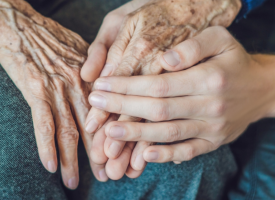Health system failing those with poor mental health
A new report card from the Australian Medical Association has found Australia’s health system and its public hospitals are failing people with poor mental health — a vulnerable and ‘overlooked’ group of patients, who are suffering as a result.
The AMA’s Public Hospital Report Card - Mental Health Edition found that due to the hospital logjam, patients with poor mental health often have to wait longer compared to any other patient group presenting to Australia’s emergency departments.
The report showed a big drop in the number of available public hospital beds for mental health patients, as increasing numbers of more severely ill patients present to emergency departments after exhausting all avenues for help.
The report card, the latest from the AMA’s Clear the Hospital Logjam campaign, shows the number of patients presenting with poor mental health has almost doubled to 121 per 10,000 Australians, up from 69 in 2004.
There has also been an almost 40 per cent decrease in the number of mental health beds in public hospitals per capita — from 45.5 to 27.5 beds per 100,000 population between 1992 and 2020.
The data show a rising reliance on ambulances to reach emergency departments with every second mental health patient (52.2 per cent) arriving by ambulance in 2020–21 compared with all other conditions, where one in three people arrive by ambulance.
On arrival, those needing admission are waiting an average of 12 hours in Queensland to 28 hours in Tasmania before they are admitted to hospital for treatment.
AMA President Professor Steve Robson said the findings were ‘unacceptable’ and showed systemic issues in the public hospital system needing urgent attention.
“We’ve been calling out the logjam in our public hospitals for months and this new report shows vulnerable patients with mental ill health are often waiting longer than other patients in the emergency department,” Professor Robson said.
The AMA’s Emergency Medicine Representative, Dr Sarah Whitelaw, said emergency departments were seeing more patients with mental health problems, more frequently arriving by ambulance, that are increasingly severely ill and needing intensive mental health care and admission to hospital.
“This is causing real anguish — imagine someone severely distressed and ill waiting 28 hours — more than entire day in an emergency department before being admitted to the mental health unit bed that they really need,” Dr Whitelaw said.
“All hospital staff, who are doing their best under the relentless pressure, are devastated at the impact on their patients and their loved ones and are experiencing their own burn out. There are also very real and increasing risks to patients and staff from violence and aggression that results from unwell patients having to wait so many hours in a cubicle that, despite our best efforts, can be very loud and stressful with bright lights and lots of people constantly moving around.
“We absolutely need to make sure these patients get to their safe, appropriate mental health unit as soon as possible to start the rest of the treatment that they need, not leave them waiting in an emergency department longer than any other group of patients,” Dr Whitelaw said.
Professor Robson said there was a yawning gap in primary care, specialist care and community mental health services — even before the National Mental Health Workforce Strategy was developed last year. It showed significant shortages of most mental health professionals, including psychiatrists, psychologists, and general practitioners, as well as a range of allied health professionals.
“It all tallies up to a health system ill-equipped to provide appropriate, acceptable care for people with poor mental health. Parents and relatives sadly know the heartache of battling though the system for years only to tragically lose their loved ones to suicide,” Professor Robson said.
“We need to urgently reverse these worrying trends and stop them from becoming normal. If a mental health patient ends up in the emergency department, the system has already failed them. The solution is prevention and early intervention, with general practice playing a key role, while at the same time boosting our hospital capacity so it is ready to support patients who need hospital treatment.”
The AMA is calling for:
- reform of hospital funding including removing the 6.5 per cent cap on activity growth and 50–50 shared funding between states and the Commonwealth
- more mental health beds, matched with medical and allied health staffing in public hospitals
- the modernisation of Medicare to support GP-led collaborative primary care
- an increase in the mental health community service capacity through expanded medical and allied health staffing
- an urgent plan to increase our mental health workforce numbers in public and private sectors
- future mental health care policy guided by the professional mental health community
- funding and strategies to address the mental health crisis in public hospitals involving public hospital doctors, GPs, psychiatrists, and other mental health professionals who are all part of the disjointed, underfunded system struggling to manage mental ill health in the community.
Read the Public Hospital Report Card – Mental Health Edition.



